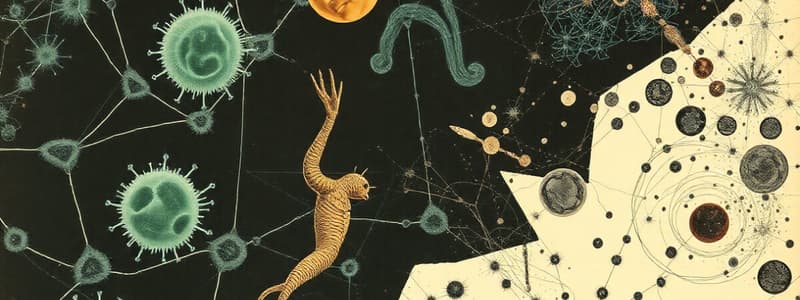Podcast
Questions and Answers
What common characteristic do both large trees and microscopic microorganisms share?
What common characteristic do both large trees and microscopic microorganisms share?
- They are both made of the same type of cells.
- They both reproduce in the same manner.
- They are both made up of cells. (correct)
- They both rely on photosynthesis for energy.
Who was the first scientist to describe cells?
Who was the first scientist to describe cells?
- Robert Hooke (correct)
- Gregor Mendel
- Louis Pasteur
- Charles Darwin
In what century did Robert Hooke first describe cells?
In what century did Robert Hooke first describe cells?
- 19th century
- 16th century
- 18th century
- 17th century (correct)
What does the presence of distinct cells in organisms indicate?
What does the presence of distinct cells in organisms indicate?
What is a notable difference mentioned between large trees and microscopic microorganisms?
What is a notable difference mentioned between large trees and microscopic microorganisms?
Flashcards are hidden until you start studying
Study Notes
Organisms and Size
- Organisms can be vastly different in size.
- Large organisms, such as trees, can be seen with the naked eye.
- Microscopic organisms are too small to be seen without a microscope.
- Despite size differences, all organisms are made up of cells.
- Cells are the basic building blocks of all living things, regardless of size.
Cells and Discovery
- Robert Hooke, a British scientist, discovered cells in the 17th century.
- He observed cells while studying the properties of cork.
- Hooke's observations were critical for understanding the structure of living things.
Studying That Suits You
Use AI to generate personalized quizzes and flashcards to suit your learning preferences.




